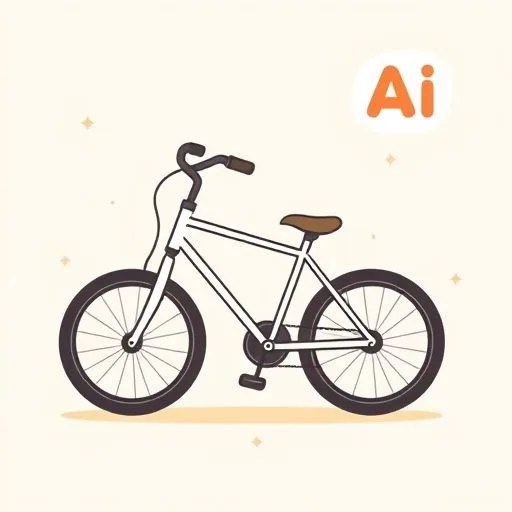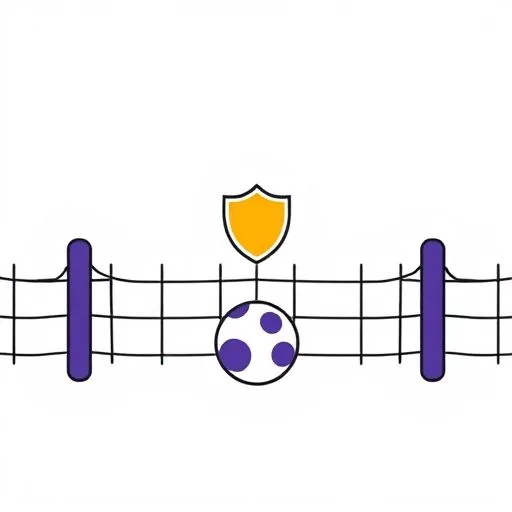
How My Daughter’s Bike Ride Taught Me About AI Training
You know that moment when you first let go of the bike seat? When your child wobbles forward on their own, equal parts determination and sheer terror in their eyes? I had that same heart-in-throat feeling last week watching my seven-year-old—just two blocks from her elementary school—experiment with an AI art generator for her unicorn comic project after class. That mix of awe at her fearlessness and panic about whether I’d prepared her enough.
New research shows most of us adults are currently that wobbly kid on the AI bicycle. Guess what? Only 12% of Canadian workers have formal AI training—yikes!—while 42% are already at it. It’s like giving a kid a skateboard without saying ‘Oops, here are the brakes.’ And friends—I’ve realized we parents hold the blueprint to fix this.
Why Celebrate AI’s Crayon Scribbles Like Kids’ Art?

Remember when your toddler proudly presented you with a paper full of chaotic scribbles? We didn’t critique the technique—we marveled at their discovery of cause and effect. That’s the exact spirit missing from our grown-up AI approach.
Turns out more than half of us are feeding AI blindfolded—and yes, it’s cooking up some hilarious mistakes. Yet when my daughter asked ChatGPT to invent backstories for her stuffed animals, we treated its odd suggestions like her early crayon adventures—laughed at its ‘flamingo who moonlights as a sushi chef,’ then discussed how to refine the prompt.
Workplaces could learn AI training from our playroom strategy: celebrate messy first attempts, then guide toward better outcomes. Because right now? We’re letting people feel embarrassed about their digital scribbles instead of normalizing the learning curve.
Imagine a label that reads, ‘Warning: AI needs training wheels—go ahead, make those glorious mistakes!’
How Can Shared Wisdom Boost AI Learning at Work?

After cheering her on at the park, I found myself swapping AI tips with neighbors in the hanok-style cafe nearby, just like any parent would. Parents trading tips like Pokémon cards. ‘The library’s robotics workshop changed everything!’ ‘Try this math app—makes learning feel like baking games!’
Contrast that with workplaces where only 46% say employers provide training while many hide their AI struggles like schoolyard insecurities.
We build parent WhatsApp groups for homework help but leave colleagues to drown in YouTube tutorials. Imagine if companies created ‘AI parenting circles’ where veterans guide AI learning newbies without judgment. After all, it takes a village to raise a tech-savvy workforce.
When Ontario workers show 71% willingness to train if offered, that’s not apathy—it’s untapped hunger for communal learning.
Why AI Needs Guardrails Like Playground Safety?

My happiest parenting moments? Watching my kid swing high after I’ve checked the equipment screws and softened the ground beneath. Yet Canadian AI users report shocking rates of unchecked outputs and guideline breaches—because who teaches digital AI safety checks?
We’d never hand our child a skateboard without discussing helmets, yet 86% fear cybersecurity risks from improperly managed AI.
Here’s where we shine as moms and dads: we instinctively create ‘innovation sandboxes.’ When my girl wanted AI-written songs for her puppet show, we set creative boundaries: no personal info shared, mom reviews outputs, credit given to human+AI collaboration.
Businesses needing policies could borrow our family tech contract—simple, visual, celebrated when followed. Guardrails don’t limit creativity; they enable fearless exploration.
Is AI Literacy Homework Essential for Adults?

Bedtime stories here often feature historical figures overcoming obstacles. Recently, Ada Lovelace joined our rotation—the mother of computing who saw potential others couldn’t. Her legacy reminds me why Canada’s fourth-from-bottom AI literacy ranking pains yet motivates.
This isn’t about raising coders; it’s about nurturing courageous adapters.
So let’s reclaim our inner parent-learner: that glorious phase where we studied phonics videos to help our kids read. Employers must prioritize training not as optional perks but as fundamental as crib safety standards.
And us? We start dinner-table conversations about AI ethics like we discuss playground kindness—making wisdom viral through generations.
Can Trust Transform Our AI Learning Journey?

There’s a game my kid loves where she falls backward, trusting I’ll catch her. Workers today face a similar trust fall with AI—92% unaware of Canadian AI governance, fearing replacement while craving skills.
Our parental response? We model lifelong AI learning. When my daughter saw me troubleshooting an AI scheduling tool, I narrated failures aloud: ‘Whoops! Let’s see why it suggested dentist appointments at midnight.’ Vulnerability became our teacher.
Atlantic Canada’s lower training interest hints at fear masquerading as reluctance. So we extend the hand we’d offer our scraped-knee child: ‘Let’s explore this together.’
Because whether facing multiplication tables or neural networks, growth happens when someone believes you can—even before you do.
How to Pedal AI Forward with Joy and Skill?

This morning, my kiddo raced ahead on her bike, streamers flying, shouting back, ‘Look, no hands!’—that breathtaking balance of skill and joy. Our AI journey can mirror this if we embrace it as parents do: with patient guidance, shared stumbles, and celebrations of progress over perfection.
Canada might trail today, but like teaching a child to ride, our greatest breakthroughs come after the wobbles.
The training gap isn’t a crisis—it’s a classroom. And we’ve already got our whiteboards ready: sticky-note policies on the fridge, collaborative learning in break rooms, ethics discussed over shared meals.
Let’s build work cultures that feel less like stressful offices and more like our kitchens during craft hour—messy, innovative, and radiant with ‘You’ve got this!’ energy.
Source: Majority of Canadians Using AI Without Proper Training, New Data Finds, Financial Post, 2025-09-23
